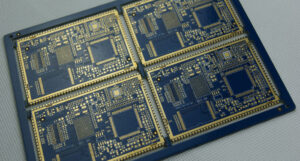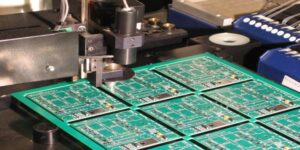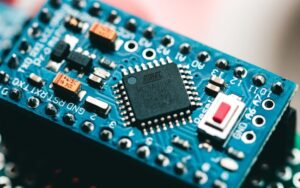At first glance, PCBs look similar on the surface, regardless of their internal quality. It is through the surface that we see the differences, and these differences are critical to the durability and functionality of the PCB throughout its lifetime.
It is critical that PCBs perform reliably, both in the manufacturing assembly process and in actual use. In addition to the associated costs, defects in the assembly process may be carried by the PCB into the final product, which may fail during actual use, leading to claims. Therefore, from this point of view, it is not too much to say that the cost of a quality PCB is negligible.
In all market segments, especially those producing products for critical applications, the consequences of such failures are unimaginable. 
These aspects should be kept in mind when comparing PCB prices. While the initial cost of a reliable, guaranteed and long-lasting product is higher, it is worth the money in the long run.
The 14 most important characteristics of a highly reliable circuit board
1. 25 micron hole wall copper thickness
Benefit: Enhanced reliability, including improved expansion resistance in the z-axis.
The risks of not doing so
Blowout or degassing, electrical connectivity issues during assembly (inner layer separation, hole wall breakage), or the potential for failure under load conditions during actual use. 20% less copper plating is specified by IPCClass2 (the standard used by most factories).
2, No solder repair or broken wire repair
Benefits: A perfect circuit ensures reliability and safety with no maintenance and no risk
Risk of not doing so
If not repaired properly, this can cause the board to break. Even if repaired ‘properly’, there is a risk of failure under load conditions (vibration, etc.), which could lead to failure in actual use.
3. Cleanliness requirements that exceed IPC specifications
Benefit: Improved PCB cleanliness leads to improved reliability.
The risks of not doing so
Residue, solder buildup on circuit boards poses a risk to the solder shield, and ionic residue can lead to solder surface corrosion and contamination risks, which can lead to reliability issues (bad solder joints/electrical failures) and ultimately increase the probability of actual failures.
4. Strictly control the lifetime of each surface treatment
Benefits: solderability, reliability, and reduced risk of moisture intrusion
Risks of not doing so
Due to the metallurgical changes in the surface finish of older boards, solderability issues may occur, and moisture ingress may cause delamination, inner layer and hole wall separation (breakage) during assembly and/or in actual use.
5. Use internationally known substrates – no “local” or unknown brands
Benefits: improved reliability and known performance
Risks of not doing so
Poor mechanical properties mean that the board will not perform as expected under assembly conditions, e.g. higher expansion characteristics can cause delamination, breakage and warpage issues. Weak electrical characteristics can lead to poor impedance performance.
6. Laminate tolerances meet IPC4101ClassB/L requirements
Benefit: Tight control of dielectric layer thickness can reduce deviations from expected values of electrical performance.
The risks of not doing so
Electrical performance may not meet specified requirements, and the same batch of components can vary widely in output/performance.
7. Define solder resist material to ensure compliance with IPC-SM-840ClassT requirements
Benefit: NCAB Group approved “good” inks for ink safety, ensuring that solder resist inks meet UL standards.
The risks of not doing so
Poor quality inks can lead to adhesion, flux resistance and hardness issues. All of these issues can cause the solder resist layer to detach from the board and eventually lead to corrosion of the copper circuitry. Poor dielectric properties can cause a short circuit due to unexpected electrical continuity/arcing.
8. Define tolerances for shapes, holes, and other mechanical features
Benefit: Tighter control of tolerances leads to better dimensional quality – improved fit, form and function
The risks of not doing so
Problems during assembly, such as alignment/fitting (press fit pin problems are only found when assembly is complete). Also, there can be problems fitting into the base due to increased dimensional deviation.
9. NCAB specifies the thickness of the solder resist layer, although the IPC does not specify it
Benefits: improved electrical insulation properties, reduced risk of flaking or loss of adhesion, enhanced resistance to mechanical shock – no matter where it occurs!
The risks of not doing so
Thin solder resist layers can lead to adhesion, flux resistance and hardness issues. All of these issues can cause the solder resist to detach from the board and eventually lead to corrosion of the copper circuitry. Poor dielectric properties due to thin solder resist can cause a short circuit due to accidental on/off arcing.
10. Defines appearance requirements and repair requirements, although not defined by the IPC
Benefit: Safety is forged with care and careful attention during the manufacturing process.
The risks of not doing so
Multiple scuffs, minor damages, patches, and repairs – boards that work but don’t look good. Beyond the problems that can be seen on the surface, what are the risks that cannot be seen, and the impact on assembly, and in real-world use?
11. Requirements for plug hole depth
Benefit: High quality plug holes will reduce the risk of failure during assembly.
The risks of not doing so
Plug holes that are not full can hold chemical residues from the sinker process, which can cause problems such as solderability. Also, holes can harbor solder beads that can splash out during assembly or actual use, causing short circuits.
12. PetersSD2955 specifies peelable blue adhesive brand and model
Benefit: The peelable blue gel designation prevents the use of “local” or cheap brands.
The risks of not doing so
Inferior or cheap peelable adhesives may blister, melt, break, or set like concrete during assembly, making the peelable adhesive not peel off/work.
13. NCAB performs a specific approval and order placement process for each purchase order
Benefit: This procedure is performed to ensure that all specifications have been confirmed.
The risks of not doing so
If product specifications are not carefully verified, the resulting deviations may not be discovered until assembly or the final product, when it is too late.
14. Sets with scrap units are not accepted
Benefit: Not using partial assembly can help customers improve efficiency.
The risks of not doing so
Sets with defects all require special assembly procedures, and if the end-of-life unit board (x-out) is not clearly marked or isolated from the set, it is possible to assemble this known bad board, thus wasting parts and time.















